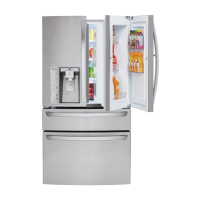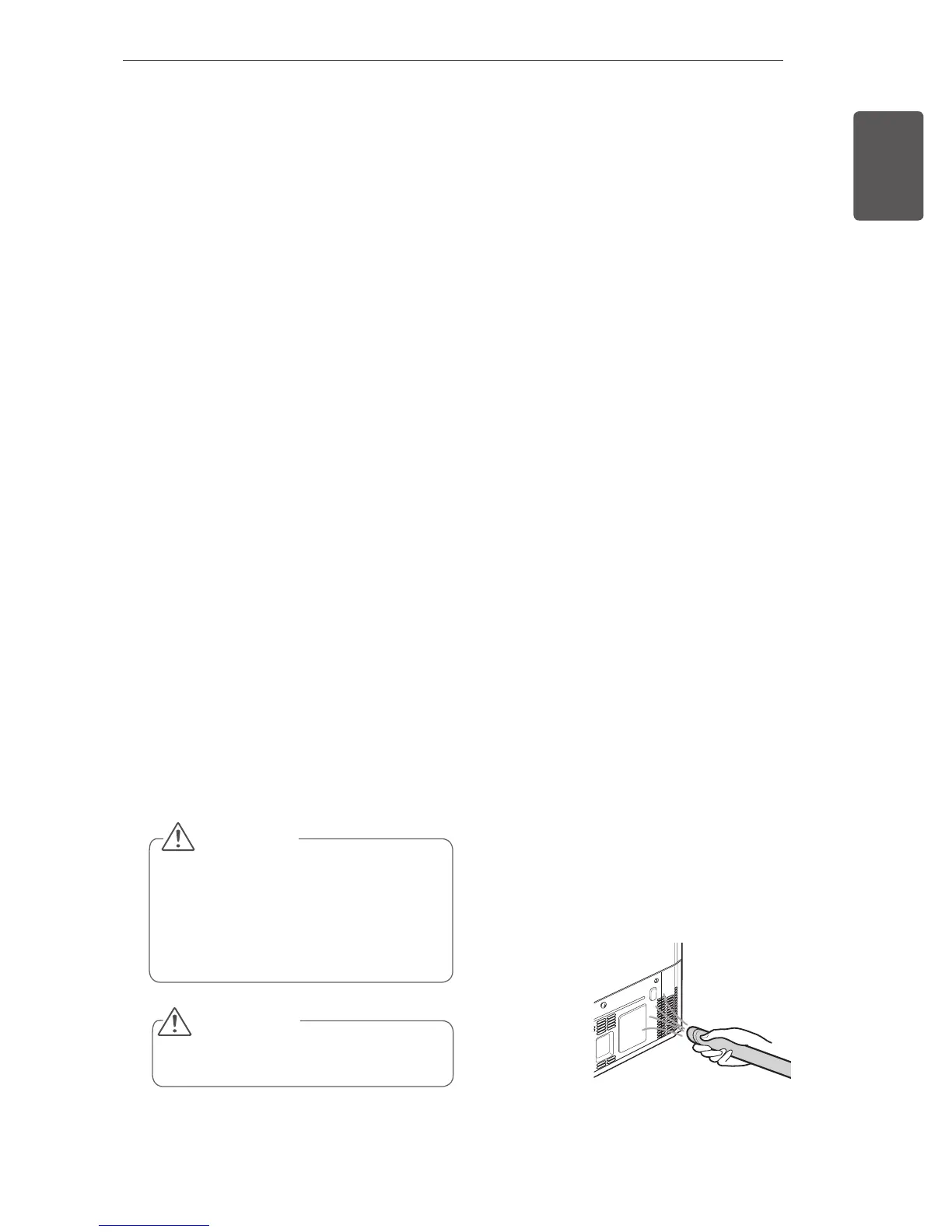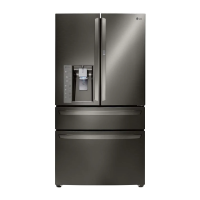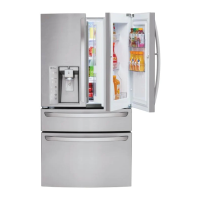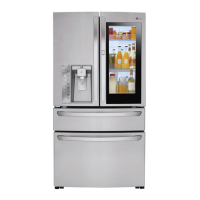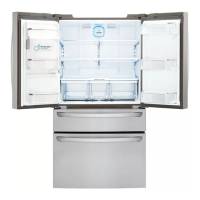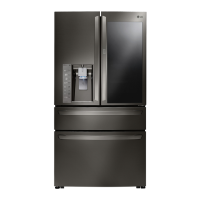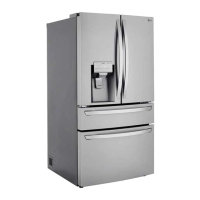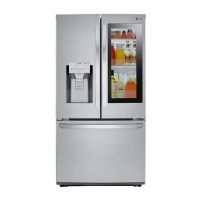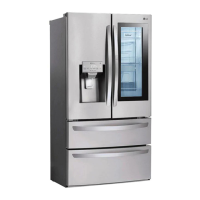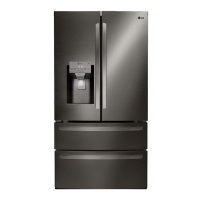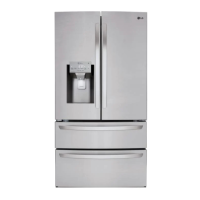41
MAINTENANCE
ENGLISH
MAINTENANCE
Cleaning
Both the refrigerator and freezer sections defrost automatically; however, clean both
y
sections about once a month to prevent odors.
Wipe up spills immediately.
y
Always unplug the refrigerator before cleaning.
y
General Cleaning Tips
Unplug refrigerator or disconnect power.
y
Remove all removable parts, such as
y
shelves, crispers, etc.
Use a clean sponge or soft cloth and a
y
mild detergent in warm water. Do not
use abrasive or harsh cleaners.
Hand wash, rinse and dry all surfaces
y
thoroughly.
Exterior
Waxing external painted metal surfaces helps
provide rust protection. Do not wax plastic
parts. Wax painted metal surfaces at least
twice a year using appliance wax (or auto paste
wax). Apply wax with a clean, soft cloth.
For products with a stainless steel exterior,
use a clean sponge or soft cloth and a mild
detergent in warm water. Do not use abrasive
or harsh cleaners. Dry thoroughly with a soft
cloth.
Inside Walls (allow freezer to warm
Inside Walls (allow freezer to warm
up so the cloth will not stick)
up so the cloth will not stick)
To help remove odors, you can wash the inside
of the refrigerator with a mixture of baking
soda and warm water. Mix 2 tablespoons of
baking soda to 1 quart of water (26 g soda
to 1 liter water) Be sure the baking soda is
completely dissolved so it does not scratch the
surfaces of the refrigerator.
Door Liners and Gaskets
Use a clean sponge or soft cloth and a mild
detergent in warm water. Do not use cleaning
waxes, concentrated detergents, bleaches,
or cleaners containing petroleum on plastic
refrigerator parts.
Plastic Parts (covers and panels)
Plastic Parts (covers and panels)
Use a clean sponge or soft cloth and a mild
detergent in warm water. Do not use glass
cleaners, abrasive cleansers, or flammable
fluids. These can scratch or damage the
material.
Condenser Coils
Use a vacuum cleaner with an attachment to
clean the condenser cover and vents. Do not
remove the panel covering the condenser coil
area.
CAUTION
Do not use a rough cloth or sponge
y
when cleaning the interior and exterior
of the refrigerator.
Do not place your hand on the bottom
y
surface of the refrigerator when
opening and closing.
WARNING
Use non-flammable cleaner. Failure to do
so can result in fire, explosion, or death.
